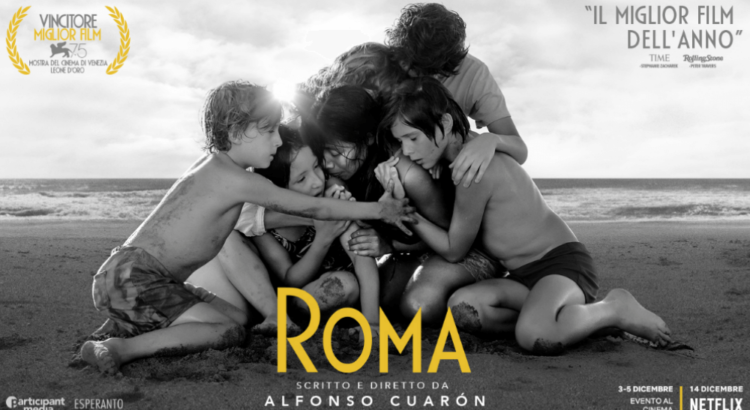Roma, a film directed, produced, co-edited and shot by Alfonso Cuarón, is a semi-autobiographical film set in 1970-1971. It follows the life of Cleo, a maid to a middle-class family in Mexico City.
Roma was originally aired– and is currently still being screened– on Netflix, where it got rave reviews. Select theaters, such as the Michigan Theater, showed the film in theaters. As someone who has watched the film both on my laptop screen and on the big screen, I can attest to the fact that one receives a very different film-watching experience depending on which setting it is enjoyed in. While seeing Roma on a smaller screen makes it no less creative or artistic in its story or message, the scope of its beauty and intensity widens, as sound and images envelop the viewer in a more immersive experience.
The film is completely in black-and-white, and in Spanish with English subtitles. Immediately, though there is no actual use of color in it, the film manages to paint a detailed picture of the affections, tensions, and family dynamics that exist within the household that Cleo works in. Life in Mexico City, as presented in the film, is rich with life and sound; I immediately could sense the energetic and animated spirit of the city through the sights and sounds of its people and animals.
From the beginning of the film, Cleo is the character to whom one is immediately drawn to; she is the center of the narrative, and holds a gravitational force over the other characters in the film as caretaker, provider, source of emotional fulfillment– though her quiet presence means that they may not be aware of that dependence. More than the star of the film, Cleo is a very interesting and nuanced character: though she barely speaks above a whisper, never betrays a hint of anger or frustration, yet her quiet gravity and strength are tangible. The martial arts scene, when she is the only person in a field of people who is able to form an intricate balancing pose– though no one takes notice– serves to illustrate the ways in which her restraint actually is a way of showing her restrained power.
Cleo endures many hardships, both before and during the film’s setting occurs; a diasporic past and rocky relationship with her mother is hinted at, and during the extent of the film she loses several other loved ones. Again and again, we see Cleo abandoned and left alone; in most scenes she may be surrounded by those who claim to love and treasure her, but ultimately she is abandoned. In her darkest moments of agony and sorrow, the people she depended on in that moment leave her to her own devices. For instance, in the scene where Fernin abandons her at the cinema to finish the movie on her own, we are given a view of the screen of the film that Cleo herself is watching, and the scene is drawn out so long that we finish the movie with her. In other similar situations, the director chose to extend the scene and stretch it out for an almost uncomfortable amount of time. This particular decision, in my mind, was made to force the readers to sit with Cleo in her silence for a while so that they can temporarily embody the stillness and the waiting that characterizes so much of her life, and to reflect upon the implicit ideas or emotions that these scenes provoke. One of these subtle ideas is the notion of strength and bravery as being traits not only exemplified by showy acts or performative expression, but that can also be found in quiet reservedness. Cleo is the prime example of this; one cannot help but note the tenacious resolve in her impassive, but determinedly expressionless, face as she watches devastation and destruction happen around her in scenes such as in the hospital baby unit and in the forest fire.
As the film continues, the more surreal and abstract images and concepts that are hinted at at its introduction are expanded upon and incorporated into the meat of the film. Scenes of destruction and violence are superimposed on ones that are canonically joyful, such as birthing a child or looking at newborn children in the hospital ward. At first, the surreal elements caught me off guard, as I had assumed that this film would be more documentary-like in its telling. However, once I realized that this film is more on the artistic side, the various images and recurring metaphors– as well as the slightly exaggerated actions and personalities of some characters– began to work together to make the film a lot more interesting.
Before coming to see this film, I had already heard very positive reviews about it. The amount of artistry and creativity in this film was a lot more than I had anticipated, so I was pleasantly surprised when the film made more of an impression of an art film than a documentary. There are so many beautiful images and ideas that are explored throughout the film, and I am glad that several of my friends watched this film so that I can talk to them about specific scenes and metaphors that I cannot do in this post, as I don’t want to spoil any part of the plot for our readers.
If you are able to catch a viewing of Roma on the small or big screen, defiantly take that opportunity. The film is a beautiful exploration of strength and beauty in the seemingly mundane, and a brilliant depiction of the various ways in which human relationships have the capacity to love and to destroy.


